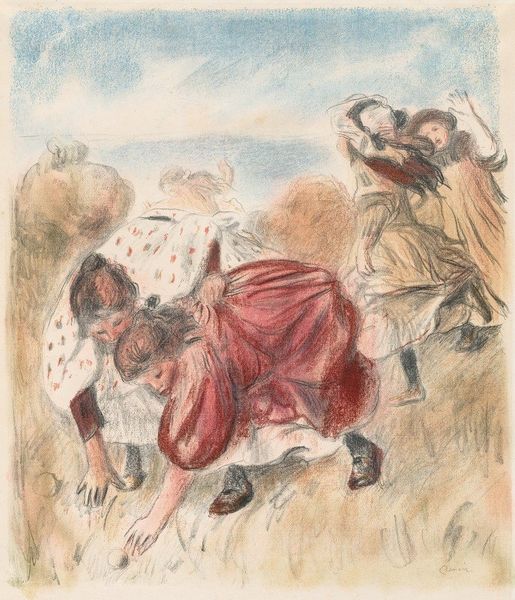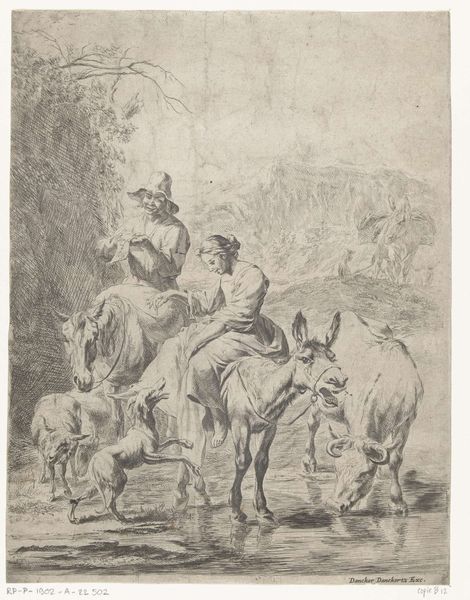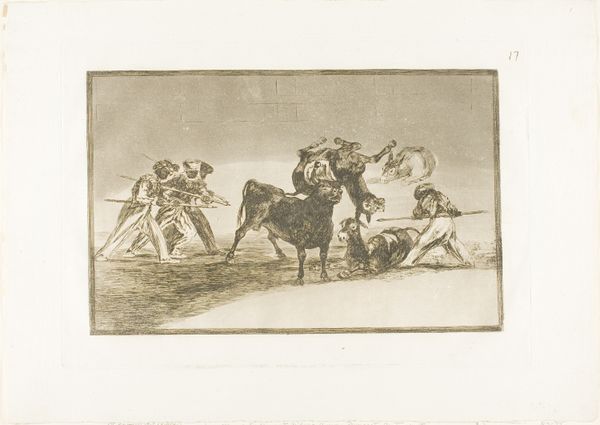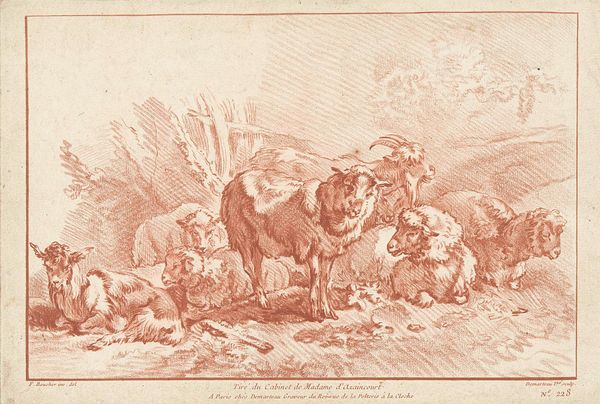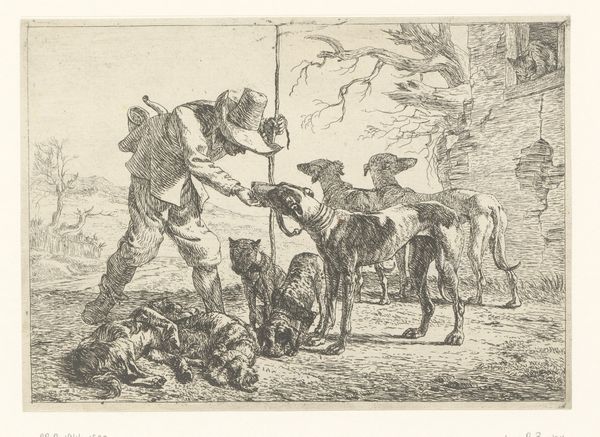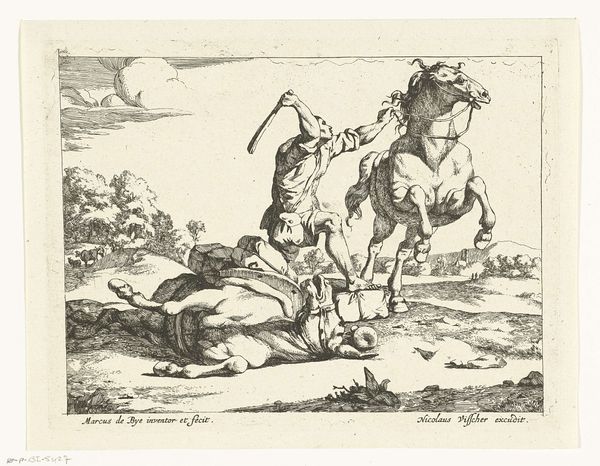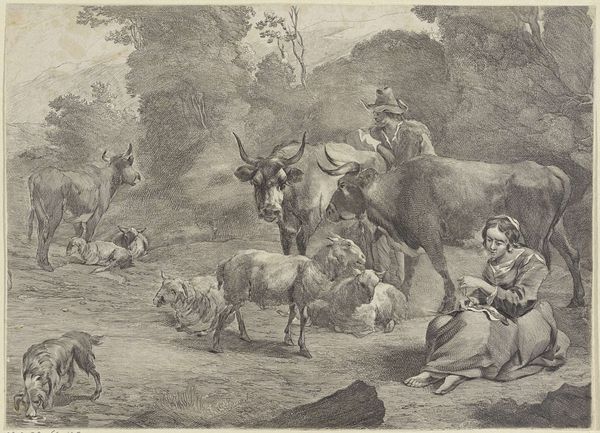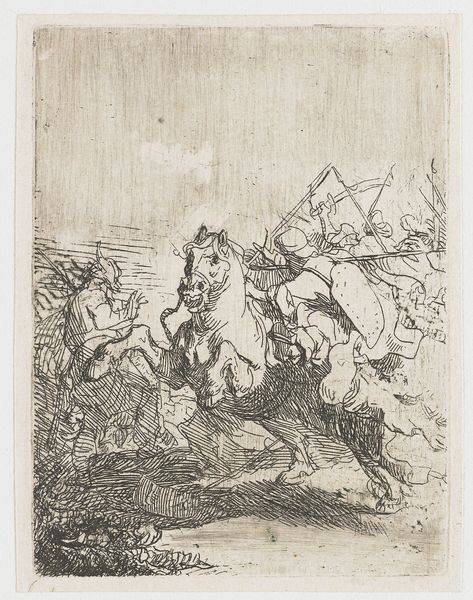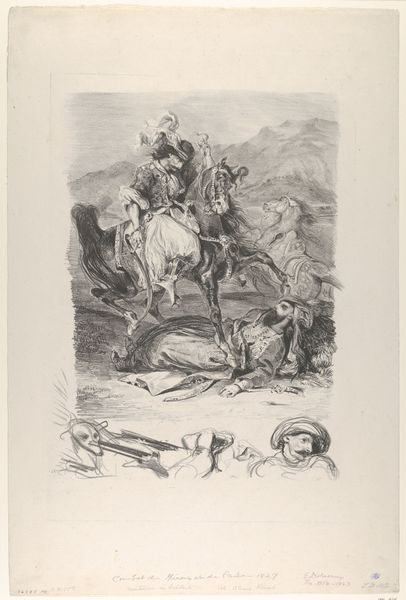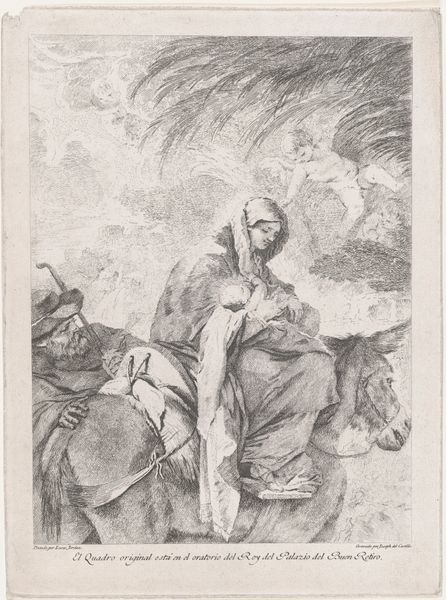
Dimensions: 22 15/16 × 20 1/8 in. (58.26 × 51.12 cm) (sight)34 1/2 × 29 1/4 × 1 1/2 in. (87.63 × 74.3 × 3.81 cm) (outer frame)
Copyright: No Copyright - United States
Curator: Oh, this one makes my heart do a little flip. Look at those colours! Editor: Well, this is Pierre-Auguste Renoir’s "Children Playing Ball," a colour lithograph and pastel created around 1900, part of the Minneapolis Institute of Art’s collection. There is such a sense of movement despite being still. What do you feel looking at it? Curator: Like I’m right there on a hazy summer day, almost dizzy with the light and the girls’ energy. It’s not sharp and photographic; it’s all hazy and full of…vibration, you know? That’s very much impressionism at play. I find my eye wanting to move across the surface in the same frantic way those girls chase that little ball. Editor: Indeed, it seems to capture the fleeting, casual joys of childhood. Renoir, known for his Impressionistic leanings, often depicted scenes of bourgeois life, and here, we have a wonderfully un-posed snapshot. Curator: "Un-posed" is the perfect word! Look at how he captures the folds of their dresses, and how the colours sort of bleed into each other… It’s like memory itself, hazy and dreamlike. The details seem not so important than conveying the feeling, a carefree romp under the sun. But what do you read in this? The politics, perhaps? Editor: Right. Renoir here, like in his other works featuring women and children, presents a constructed vision of femininity and leisure that's intertwined with the social expectations of the era. The rosy depiction can obscure some of the harder social realities, romanticizing middle-class existence. These images circulated widely, helping shape perceptions of idealized family life, so they carry real cultural weight. Curator: True, it’s easy to get swept up in the surface beauty, forgetting it’s not a simple window into reality. It’s carefully crafted. Editor: Precisely, and Renoir's popularity shows us how eager the public was for this particular version of idyllic domesticity. Still, it’s beautiful and accessible artwork with universal appeal. Curator: Oh absolutely, it speaks to some yearning in me. A little moment of joy and sunbeams...I like letting it affect me, critically aware of all of the layers involved or not! Editor: I appreciate its complexity. There is so much to learn.
Comments
minneapolisinstituteofart about 2 years ago
⋮
The French Impressionist painter Pierre-Auguste Renoir embraced printmaking later in his career, producing over fifty etchings and lithographs in the 1890s. Color lithography had become a favored print medium for many Impressionist artists. Renoir collaborated with a master printer, Auguste Clot, to create this complex work which required six separate stones for the six colors used—pink, red, orange, green, blue, and black. Given the size of the image and number of stones printed, impressions vary, as it was difficult to achieve a perfect alignment and clean registration of colors as found in this impression.
Join the conversation
Join millions of artists and users on Artera today and experience the ultimate creative platform.
